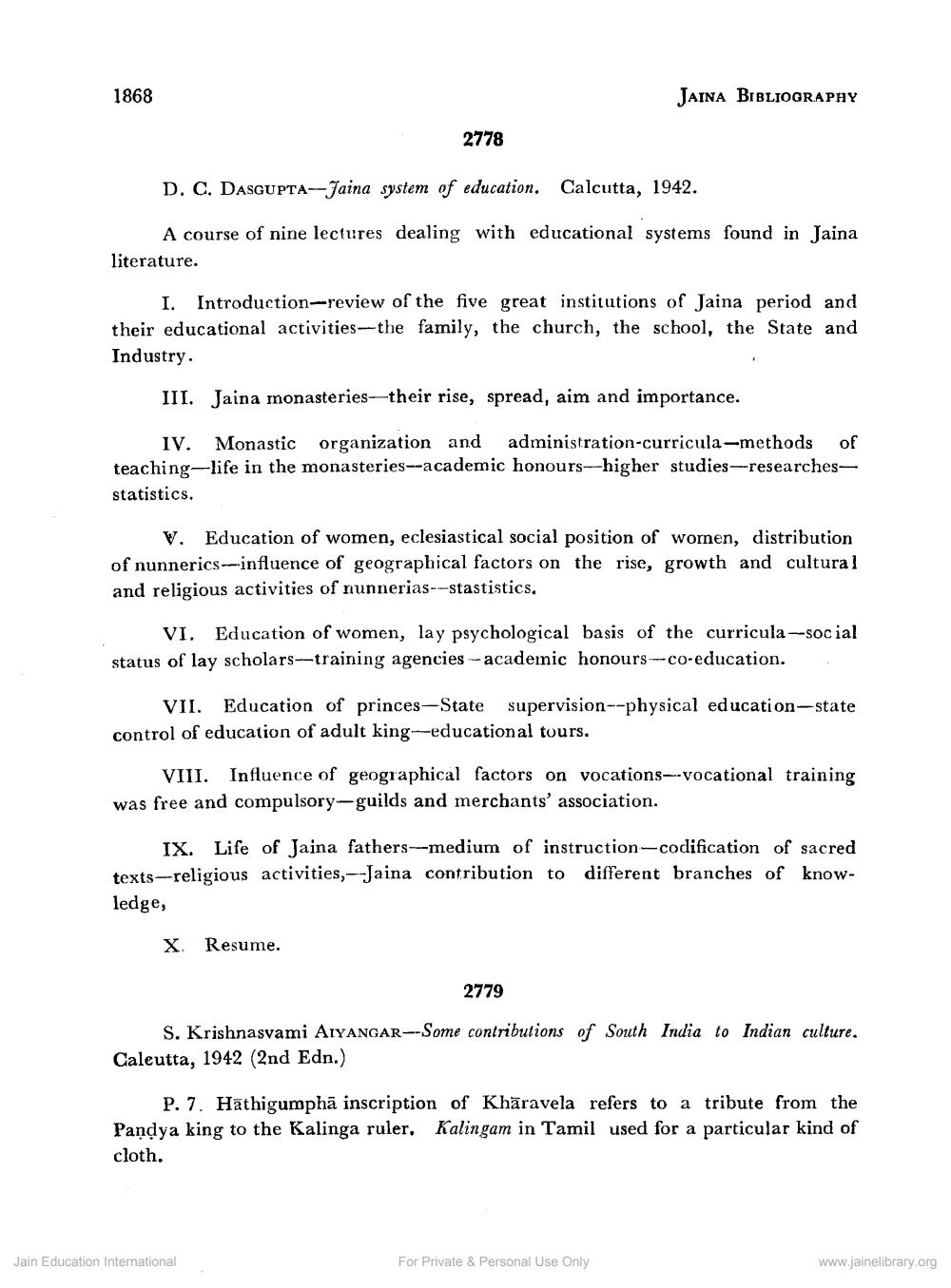________________
1868
2778
D. C. DASGUPTA-Jaina system of education. Calcutta, 1942.
A course of nine lectures dealing with educational systems found in Jaina literature.
I. Introduction-review of the five great institutions of Jaina period and their educational activities-the family, the church, the school, the State and Industry.
III. Jaina monasteries-their rise, spread, aim and importance.
IV. Monastic organization and teaching-life in the monasteries-academic honours-higher studies-researchesstatistics.
JAINA BIBLIOGRAPHY
V. Education of women, eclesiastical social position of women, distribution of nunnerics-influence of geographical factors on the rise, growth and cultural and religious activities of nunnerias--stastistics.
administration-curricula-methods
VI. Education of women, lay psychological basis of the curricula-social status of lay scholars-training agencies-academic honours-co-education.
X. Resume.
VII. Education of princes-State supervision--physical education-state control of education of adult king-educational tours.
of
VIII. Influence of geographical factors on vocations-vocational training was free and compulsory-guilds and merchants' association.
IX. Life of Jaina fathers-medium of instruction-codification of sacred texts-religious activities,-Jaina contribution to different branches of knowledge,
2779
Jain Education International
S. Krishnasvami AIYANGAR--Some contributions of South India to Indian culture. Calcutta, 1942 (2nd Edn.)
P. 7. Hathigumphä inscription of Kharavela refers to a tribute from the Pandya king to the Kalinga ruler. Kalingam in Tamil used for a particular kind of cloth.
For Private & Personal Use Only
www.jainelibrary.org




